Are these the five worst places to live in Sweden?
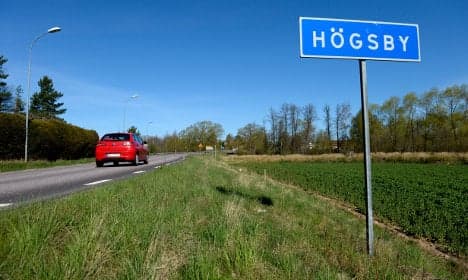
Sweden is a great place to be, from its vibrant capital to cute, picturesque towns in the countryside. But even within this Nordic paradise, there are some real dumps. Here's our guide to the five municipalities that ended up at the bottom of an annual ranking of places to live in Sweden.
On Friday the Fokus magazine published its annual 'Best Place To Live' ranking of all 290 Swedish municipalities, based on factors ranging from unemployment to teacher-pupil ratios, property prices, number of people on benefits and tax rates.
In this year's ranking, the capital Stockholm nabbed first place, just ahead of university towns Lund and Uppsala. They are all wealthy, well-educated and well-connected cities which come high in the ranking every year. But what about the municipalities that ended up at the bottom of the table? We've put their 2014 ranking in brackets after the name.
1. Högsby – 290 (281)
Population: 5,782
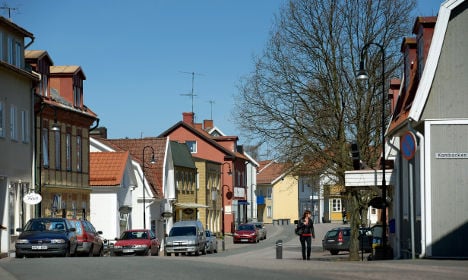
Högsby main street. Photo: Janerik Henriksson/TT
Högsby in Småland in southern Sweden is connected by rail to Kalmar to the south and Linköping to the north. The stream Emån flows through the village and people living next to the water frequently find their basements flooded when it breaks its banks during heavy rain storms in spring. This town's main tourist attraction is the Greta Garbo museum, dedicated to the Swedish movie star whose mother was born in Högsby.
The village has been at the bottom of Fokus' table for the past few years, often marked down for not being “family friendly” enough with poor access to a variety of schools. It suffers from many of the same problems as other rural towns in Sweden, with more people leaving the area than moving there and a high unemployment rate of 10.2 percent (compared to the Swedish average of 7.8 percent).
2. Ljusnarsberg – 289 (287)
Population: 4,913
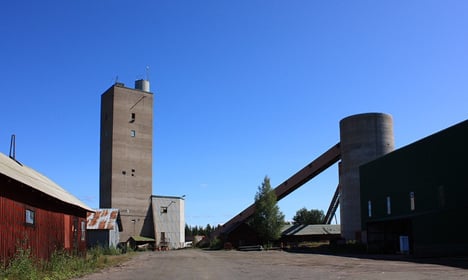
The former mine in Yxsjö, Ljusnarsberg. Photo: Peter Korkala/Wikimedia Commons
The average age of a Ljusnarsberg resident is high, 47.2 years old compared to the Swedish average of 41.2. Once a booming industry area in the mountainous central Swedish region of Bergslagen, Ljusnarsberg has struggled to regain its former glory after the last of its iron ore mines closed in 1978. Many of the ruins still remain and much like Högsby it struggles with a high unemployment rate of 11.8 percent in 2014.
Today, the only product from Ljusnarsberg which ever reaches beyond Sweden's borders comes from its 'capital' town Kopparberg, home to Kopparbergs Brewery, which makes the world famous Swedish fruit cider. In 2002 the municipality held a referendum on changing its name to Kopparberg, which would arguably have helped the area to market itself. A majority voted against.
3. Storfors – 288 (288)
Population: 4,106
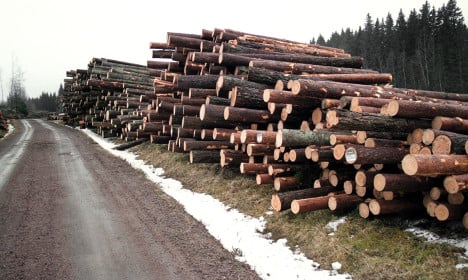
Timber on the roadside in Storfors. Photo: Fredrik Persson/SCANPIX
Storfors in Värmland in central Sweden has remained on a solid 288th place since last year. The small municipality is home to the controversial Lundsberg boarding school, attended by Sweden's Prince Carl Philip in his youth. This is really its only claim to fame. Lundsberg is also the main employer in the area, which had an unemployment rate of 14.2 percent 2014.
Four hundred years ago, the area was known for its production of pipes for revolvers, an industry that has lived on – albeit in a slightly different shape. Today, most of the factories manufacture heavy pipes for the oil and gas industry. But even this long-lived industry is struggling, and OSTP, one of the main firms, announced earlier this year it was going to dismantle its factory after several years of heavy financial losses.
4. Ragunda – 287 (281)
Population: 5,440
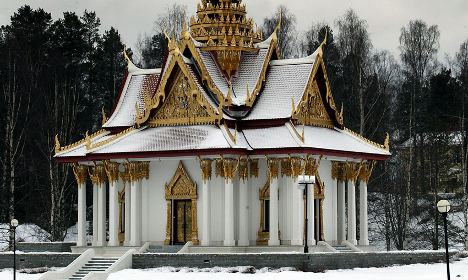
The Thai pavilion in Utanede, Ragunda. Photo: Denny Calvo / SCANPIX
One in ten people in Ragunda municipality in northern Sweden is unemployed. It is home to nine water power plants which together produce around 10 percent of Sweden's water-powered electricity.
Ragunda's main tourist attraction is rather random: a Thai pavilion adored with gold-foil ornaments worth around three million Swedish kronor (or 14 million Thai bath), gifted to the municipality by Thailand's deputy prime minister, built in 1999. The reason? To commemorate fifth King of Siam Chulalongkorn's visit to the village Utanede back in 1897. The royal was visiting Sweden's King Oscar II for the Stockholm World Fair, who decided he wanted to show his royal colleague the real Sweden. If the king had known in 1897 that it would be voted one of the worst municipalities in Sweden in 2015, perhaps he would have gone elsewhere.
5. Överkalix – 286 (279)
Population: 3,409
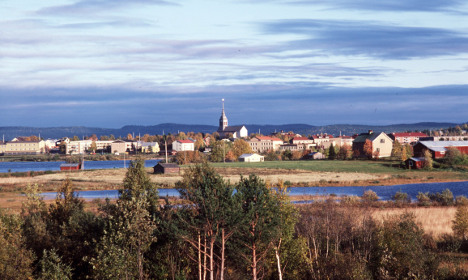
The Överkalix skyline. Photo: Leif R Jansson/FLT-PICA
Överkalix in the far north of Sweden suffers from a decreasing and aging population. The average age of its residents is 49.4 years.
Traditionally, Överkalix was supported by agriculture and forestry, but as the two industries slowly died out over the later part of the last century the population dwindled from around 6,000 in the 1970s to nearly half as many in 2015. Today, situated close to the border with Finland, it is mainly a commuter town to nearby Luleå (that's 'nearby' in northern Swedish terms; the distance between the towns is 108 kilometres).
Have you visited these municipalities and are a big fan? Defend them in the comments below.
READ ALSO: The six cutest Swedish towns you've never heard of
Comments
See Also
On Friday the Fokus magazine published its annual 'Best Place To Live' ranking of all 290 Swedish municipalities, based on factors ranging from unemployment to teacher-pupil ratios, property prices, number of people on benefits and tax rates.
In this year's ranking, the capital Stockholm nabbed first place, just ahead of university towns Lund and Uppsala. They are all wealthy, well-educated and well-connected cities which come high in the ranking every year. But what about the municipalities that ended up at the bottom of the table? We've put their 2014 ranking in brackets after the name.
1. Högsby – 290 (281)
Population: 5,782

Högsby main street. Photo: Janerik Henriksson/TT
Högsby in Småland in southern Sweden is connected by rail to Kalmar to the south and Linköping to the north. The stream Emån flows through the village and people living next to the water frequently find their basements flooded when it breaks its banks during heavy rain storms in spring. This town's main tourist attraction is the Greta Garbo museum, dedicated to the Swedish movie star whose mother was born in Högsby.
The village has been at the bottom of Fokus' table for the past few years, often marked down for not being “family friendly” enough with poor access to a variety of schools. It suffers from many of the same problems as other rural towns in Sweden, with more people leaving the area than moving there and a high unemployment rate of 10.2 percent (compared to the Swedish average of 7.8 percent).
2. Ljusnarsberg – 289 (287)
Population: 4,913
The former mine in Yxsjö, Ljusnarsberg. Photo: Peter Korkala/Wikimedia Commons
The average age of a Ljusnarsberg resident is high, 47.2 years old compared to the Swedish average of 41.2. Once a booming industry area in the mountainous central Swedish region of Bergslagen, Ljusnarsberg has struggled to regain its former glory after the last of its iron ore mines closed in 1978. Many of the ruins still remain and much like Högsby it struggles with a high unemployment rate of 11.8 percent in 2014.
Today, the only product from Ljusnarsberg which ever reaches beyond Sweden's borders comes from its 'capital' town Kopparberg, home to Kopparbergs Brewery, which makes the world famous Swedish fruit cider. In 2002 the municipality held a referendum on changing its name to Kopparberg, which would arguably have helped the area to market itself. A majority voted against.
3. Storfors – 288 (288)
Population: 4,106

Timber on the roadside in Storfors. Photo: Fredrik Persson/SCANPIX
Storfors in Värmland in central Sweden has remained on a solid 288th place since last year. The small municipality is home to the controversial Lundsberg boarding school, attended by Sweden's Prince Carl Philip in his youth. This is really its only claim to fame. Lundsberg is also the main employer in the area, which had an unemployment rate of 14.2 percent 2014.
Four hundred years ago, the area was known for its production of pipes for revolvers, an industry that has lived on – albeit in a slightly different shape. Today, most of the factories manufacture heavy pipes for the oil and gas industry. But even this long-lived industry is struggling, and OSTP, one of the main firms, announced earlier this year it was going to dismantle its factory after several years of heavy financial losses.
4. Ragunda – 287 (281)
Population: 5,440

The Thai pavilion in Utanede, Ragunda. Photo: Denny Calvo / SCANPIX
One in ten people in Ragunda municipality in northern Sweden is unemployed. It is home to nine water power plants which together produce around 10 percent of Sweden's water-powered electricity.
Ragunda's main tourist attraction is rather random: a Thai pavilion adored with gold-foil ornaments worth around three million Swedish kronor (or 14 million Thai bath), gifted to the municipality by Thailand's deputy prime minister, built in 1999. The reason? To commemorate fifth King of Siam Chulalongkorn's visit to the village Utanede back in 1897. The royal was visiting Sweden's King Oscar II for the Stockholm World Fair, who decided he wanted to show his royal colleague the real Sweden. If the king had known in 1897 that it would be voted one of the worst municipalities in Sweden in 2015, perhaps he would have gone elsewhere.
5. Överkalix – 286 (279)
Population: 3,409

The Överkalix skyline. Photo: Leif R Jansson/FLT-PICA
Överkalix in the far north of Sweden suffers from a decreasing and aging population. The average age of its residents is 49.4 years.
Traditionally, Överkalix was supported by agriculture and forestry, but as the two industries slowly died out over the later part of the last century the population dwindled from around 6,000 in the 1970s to nearly half as many in 2015. Today, situated close to the border with Finland, it is mainly a commuter town to nearby Luleå (that's 'nearby' in northern Swedish terms; the distance between the towns is 108 kilometres).
Have you visited these municipalities and are a big fan? Defend them in the comments below.
READ ALSO: The six cutest Swedish towns you've never heard of
Join the conversation in our comments section below. Share your own views and experience and if you have a question or suggestion for our journalists then email us at [email protected].
Please keep comments civil, constructive and on topic – and make sure to read our terms of use before getting involved.
Please log in here to leave a comment.